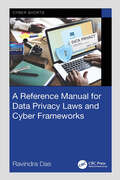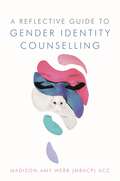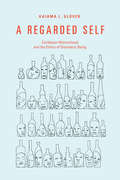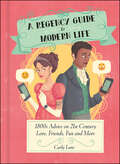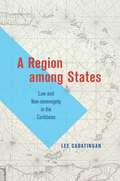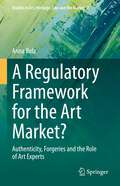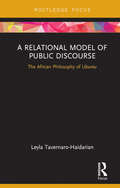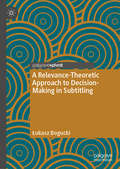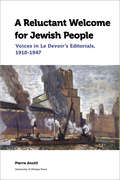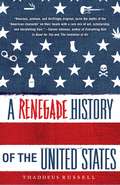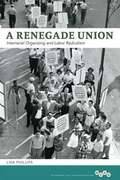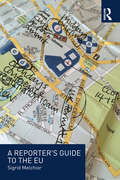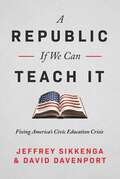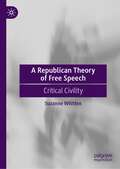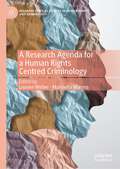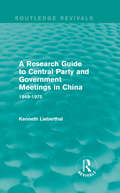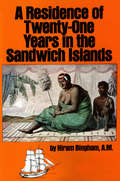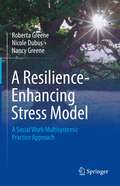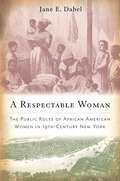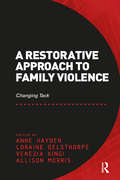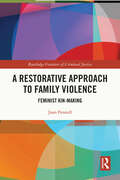- Table View
- List View
A Reference Manual for Data Privacy Laws and Cyber Frameworks (Cyber Shorts)
by Ravindra DasAs the world is becoming more digital and entwined together, the cybersecurity threat landscape has no doubt become a daunting one. For example, typical threat variants of the past, especially those of phishing, have now become much more sophisticated and covert in nature. A lot of this has been brought on by the proliferation of ransomware, which exploded during the COVID-19 pandemic. Now, there is another concern that is looming on the horizon: data privacy. Now, more than ever, consumers on a global basis want to know exactly what is happening to their personal identifiable information (PII) datasets. Examples of what they want to know about include the following: What kinds and types of information and data are being collected about them How those PII datasets are being stored, processed, and transacted with How their PII datasets are being used by third-party suppliers In response to these concerns and fears, as well as the cyber risks posed by these datasets, many nations around the world have set up rather extensive and very detailed data privacy laws. In their respective tenets and provisions, these pieces of legislation not only specify why and how businesses need to comply with them, but also outline the rights that are afforded to each and every consumer. In this book, we detail the tenets and provisions of three key data privacy laws: The GDPR The CCPA The CMMC We also provide a general framework at the end on how a business can comply with these various data privacy laws.The book begins with an in-depth overview of the importance of data and datasets, and how they are so relevant to the data privacy laws just mentioned.
A Reflective Guide to Gender Identity Counselling
by Madison-Amy WebbCounselling professionals are increasingly seeking training for working with gender variant clients. Madison-Amy Webb invites them to consider a simple truth: everyone has a gender identity, whether or not they've given it much thought. By reflecting on their own gender identity through the exercises provided, counsellors can relate to clients in new and productive ways, gaining a more nuanced understanding of the issues faced by their clients and of their own identity.Incisive yet accessible, this unique guide shines a light on how the popular conception of gender identity came into being by looking at the social and historical influences at play. This context is then brought to life with a rich variety of case studies and excerpts from the author's own diary. Reflective exercises such as 'The Dressing Up Box' and 'Personal Meaning' will help readers develop a deeper understanding of their own gender identity, while clinical techniques offer new ways to connect with gender variant clients effectively. Essential reading for any counselling professional working with gender variant clients.
A Regarded Self: Caribbean Womanhood and the Ethics of Disorderly Being
by Kaiama L. GloverIn A Regarded Self Kaiama L. Glover champions unruly female protagonists who adamantly refuse the constraints of coercive communities. Reading novels by Marie Chauvet, Maryse Condé, René Depestre, Marlon James, and Jamaica Kincaid, Glover shows how these authors' women characters enact practices of freedom that privilege the self in ways unmediated and unrestricted by group affiliation. The women of these texts offend, disturb, and reorder the world around them. They challenge the primacy of the community over the individual and propose provocative forms of subjecthood. Highlighting the style and the stakes of these women's radical ethics of self-regard, Glover reframes Caribbean literary studies in ways that critique the moral principles, politicized perspectives, and established critical frameworks that so often govern contemporary reading practices. She asks readers and critics of postcolonial literature to question their own gendered expectations and to embrace less constrictive modes of theorization.
A Regency Guide to Modern Life: 1800s Advice on 21st Century Love, Friends, Fun and More
by Carly LaneNavigate the struggles of modern life—from relationships to petty office rivalries—with amusing, Austen- and Bridgerton-inspired lessons from the regency era. What would Darcy do? How can you be more Bridgerton? Take the Regency approach and be prepared for anything life throws at you—from dates to duels, from manners to matters of the heart. You&’ll soon find yourself the catch of the season. Sick of indecent proposals from untrustworthy rakes? Be more discerning with your dance card and swipe right on only the most eligible and dashing suitors. Does a rival at work keep trying to metaphorically (or literally) trip you up in front of the boss? Learn to sidestep petty rivalries using the rules of the Regency ballroom. Whether you want to avoid scandal, or embrace it, keep your name out of the gossip columns and group chats with this modern take on the rules of polite society. Putting a fresh spin on real Regency etiquette advice, A Regency Guide to Modern Life is a tongue-in-cheek handbook to navigating friendship, dating, work, summer holidays, social events, self-confidence and more—the perfect gift for fans of period dramas and Jane Austen.
A Regiment of Slaves: The 4th United States Colored Infantry, 1863-1866
by Edward G. LongacreThe 4th United States Colored Troops (USCT) regiment saw considerable action in the eastern theater of operations from late 1863 to mid-1865. The regiment—drawn largely from freedmen and liberated slaves in the Middle Atlantic and New England states—served in Maj. Gen. Benjamin F. Butler’s Army of the James, whose mission was to capture the Confederate capital at Richmond. From May to December 1864, the 4th saw action in the Bermuda Hundred and Richmond-Petersburg campaigns, and in early 1865 helped capture the defenses of Wilmington, North Carolina, the last open seaport of value to the Confederacy.Citing recently discovered and previously unpublished accounts, author Edward G. Longacre goes beyond the battlefield heroics of the 4th USCT, blending his unique insights into political and social history to analyze the motives, goals, and aspirations of the African American enlisted men. The author also emphasizes how these soldiers overcame what one of their commanders called “stupid, unreasoning, and quite vengeful prejudice” and shows how General Butler, a supporter of black troops, gave the unit opportunities to prove itself in battle, resulting in a combat record of which any infantry regiment, black or white, could be proud.
A Region among States: Law and Non-sovereignty in the Caribbean
by Lee CabatinganBased on long-term ethnographic fieldwork at the Caribbean Court of Justice, A Region among States explores the possibility of constituting a region on a geopolitical and ideological terrain dominated by the nation-state. How is it that a great swath of the independent, English-speaking Caribbean continues to accept the judicial oversight of their former colonizer via the British institution of the Privy Council? And what possibilities might the Caribbean Court of Justice—a judicial institution responsive to the region, not to any single nation—offer for untangling sovereignty and regionhood, law and modernity, and postcolonial Caribbean identity? Joining the Court as an intern, Lee Cabatingan studied its work up close: she attended each court hearing and numerous staff meetings, served on committees, assisted with the organization of conferences, and helped prepare speeches and presentations for the judges. She now offers insight into not only how the Court positions itself vis-à-vis the Caribbean region and the world but also whether the Court—and, perhaps, the region itself as an overarching construct—might ever achieve a real measure of popular success. In their quest for an accepting, eager constituency, the Court is undertaking a project of extrajudicial region building that borrows from the toolbox of the nation-state. In each chapter, Cabatingan takes us into an analytical dimension familiar from studies of nation and state building—myth, territory, people, language, and brand—to help us understand not only the Court and its ambitions but also the regionalist project, beset as it is with false starts and disappointments, as a potential alternative to the sovereign state.
A Regulatory Framework for the Art Market?: Authenticity, Forgeries and the Role of Art Experts (Studies in Art, Heritage, Law and the Market #7)
by Anna BolzThis book addresses practical issues in connoisseurship and authentication, as well as the legal implications that arise when an artwork’s authenticity is challenged. In addition, the standards and processes of authentication are critically examined and the legal complications which can inhibit the expression of expert opinions are discussed. The notion of authenticity has always commanded the attention of art market participants and the general art-minded public alike. Coinciding with this, forgery is often considered to be the world’s most glamorous crime, packed with detective stories that are usually astonishing and often bizarre. The research includes findings by economists, sociologists, art historians, lawyers, academics and practitioners, all of which yield insights into the mechanics and peculiarities of the art business and explain why it works so differently from other markets. However, this book will be of interest not only to academics, but to everyone interested in questions of authenticity, forgery and connoisseurship. At the same time, one of its main aims is to advocate best practices in the art market and to stress the importance of cooperation among all disciplines with a stake in it. The results are intended to offer guidance to art market stakeholders, legal practitioners and art historians alike, while also promoting mutual understanding and cooperation.
A Relational Model of Public Discourse: The African Philosophy of Ubuntu (Routledge Focus on Communication Studies)
by Leyla Tavernaro-HaidarianContemporary democratic discourses are frequently, though not exclusively, characterized by an attitude of ‘pro and con' where the aim is to persuade others, a jury or an audience, of what is right and what is wrong. Challenging such procedures, this book teases out an alternative model of public discourse that is based in collaboration and deliberation. The African philosophy of ubuntu offers valuable insights in this regard as it implies relational notions of power that contrast and complement individualist facets. It provides the space to think and speak in ways that support harmonious and cohesive societal structures and practices. The book’s model of communication rests on the premise that the various interests of individuals and groups, while richly diverse, can be conceived of as profoundly bound-up rather than incompatible. In this way communication enables broader lines of action and a wider scope for achieving diversity and common ground.
A Relevance-Theoretic Approach to Decision-Making in Subtitling
by Łukasz BoguckiThis book aims to investigate the process of decision-making in subtitling of feature films and entertainment series. The author uses Relevance Theory (Sperber and Wilson,1986) to argue that the technical, linguistic and translational constraints at work in subtitling result in a curtailed target text, and illustrates this argument by invoking examples drawn from the English-Polish subtitles of films and television series available through the subscription service Netflix. After introducing the current state of research on audiovisual translation within and outside the framework of translation studies, he presents the core concepts underpinning Relevance Theory and explains how it can be used to construct a model of the process of subtitling. This book will be of interest to students and scholars working in the fields of translation studies, audiovisual translation studies, and communication studies.
A Reluctant Welcome for Jewish People: Voices in Le Devoir's Editorials, 1910-1947 (Canadian Studies)
by Pierre AnctilNoted historian Pierre Anctil takes a deep dive into editorials devoted to Jews and Judaism in Quebec’s daily Le Devoir in the first half of the twentieth century. Long one of the most discussed historiographical issues in Canadian Jewish history, these editorials are of great significance as they are representative of the reaction of the nationalist Francophone elite to the Jewish presence in Montreal, to German Nazi State anti-Semitism and to the Shoah. Pierre Anctil proposes a new reading of the editorials published in the pages of Le Devoir from 1910 to 1947—from the founding of the newspaper by Henri Bourassa until the death of its second director, Georges Pelletier. During that time, some two hundred editorials were devoted to Jews and Judaism, of which Anctil has selected sixty for inclusion in this volume. Although many of the editorials conveyed the clearly anti-Semitic views of Le Devoir’s editorialists and of Quebec society at large, a number of the editorials did express positive views of Jewish activities and accomplishments in Quebec society. Readers will find this to be an in-depth analysis and nuanced treatment of an important aspect of Canadian Jewish history. This book is published in English, translated from the original "À chacun ses juifs". - Quelle place la question juive a-t-elle occupée dans les pages du quotidien québécois Le Devoir dans la première moitié du XXe siècle? L’historien Pierre Anctil propose une analyse détaillée des éditoriaux publiés par ce journal respecté entre 1910 et 1947. La position du Devoir relativement à la communauté juive de Montréal et au judaïsme en général est l’une des questions historiographiques les plus débattues en histoire juive canadienne. En effet, les éditoriaux parus dans Le Devoir sont d’une grande signification dans la mesure où ils sont représentatifs de la réaction de l’élite francophone nationaliste à la présence juive à Montréal, à l’antisémitisme de l’État nazi allemand, et à la Shoah. Plusieurs ouvrages de langue anglaise décrivent Le Devoir comme un exemple typique de la position idéologique du Canada français des années 1930 et sa méfiance, voire son hostilité, envers les Juifs. Jusqu’à maintenant, toutefois, aucune étude sérieuse n’avait été réalisée pour appuyer ou pour réfuter ce postulat. Pierre Anctil propose une nouvelle lecture des éditoriaux du Devoir parus entre 1910 et 1947 – soit depuis la fondation du journal par Henri Bourassa jusqu’à la mort de son deuxième éditeur, Georges Pelletier. Environ 200 des éditoriaux publiés pendant cette période – soit 2 % du nombre total – portaient sur les Juifs et le judaïsme. Anctil a fait une sélection de soixante éditoriaux et les présente en version intégrale et offre un commentaire critique pour chacun. De cette collection d’éditoriaux et leur analyse émerge enfin une idée plus claire de l’antisémitisme de l’époque, à la fois dans Le Devoir et dans la société québécoise. Ce livre est publié en anglais, une traduction du titre original "À chacun ses juifs".
A Renegade History of the United States: How Drunks, Delinquents, And Other Outcasts Made America
by Thaddeus RussellIn this groundbreaking book, noted historian Thaddeus Russell tells a new and surprising story about the origins of American freedom. Rather than crediting the standard textbook icons, Russell demonstrates that it was those on the fringes of society whose subversive lifestyles helped legitimize the taboo and made America the land of the free. In vivid portraits of renegades and their “respectable” adversaries, Russell shows that the nation’s history has been driven by clashes between those interested in preserving social order and those more interested in pursuing their own desires—insiders versus outsiders, good citizens versus bad. The more these accidental revolutionaries existed, resisted, and persevered, the more receptive society became to change. Russell brilliantly and vibrantly argues that it was history’s iconoclasts who established many of our most cherished liberties. Russell finds these pioneers of personal freedom in the places that usually go unexamined—saloons and speakeasies, brothels and gambling halls, and even behind the Iron Curtain. He introduces a fascinating array of antiheroes: drunken workers who created the weekend; prostitutes who set the precedent for women’s liberation, including “Diamond Jessie” Hayman, a madam who owned her own land, used her own guns, provided her employees with clothes on the cutting-edge of fashion, and gave food and shelter to the thousands left homeless by the 1906 San Francisco earthquake; there are also the criminals who pioneered racial integration, unassimilated immigrants who gave us birth control, and brazen homosexuals who broke open America’s sexual culture. Among Russell’s most controversial points is his argument that the enemies of the renegade freedoms we now hold dear are the very heroes of our history books— he not only takes on traditional idols like John Adams, Thomas Jefferson, Andrew Carnegie, John Rockefeller, Thomas Edison, Franklin Roosevelt, and John F. Kennedy, but he also shows that some of the most famous and revered abolitionists, progressive activists, and leaders of the feminist, civil rights, and gay rights movements worked to suppress the vibrant energies of working-class women, immigrants, African Americans, and the drag queens who founded Gay Liberation. This is not history that can be found in textbooks— it is a highly original and provocative portrayal of the American past as it has never been written before.
A Renegade Union: Interracial Organizing and Labor Radicalism
by Lisa PhillipsDedicated to organizing workers from diverse racial, ethnic, and religious backgrounds, many of whom were considered "unorganizable" by other unions, the progressive New York City-based labor union District 65 counted among its 30,000 members retail clerks, office workers, warehouse workers, and wholesale workers. In this book, Lisa Phillips presents a distinctive study of District 65 and its efforts to secure economic equality for minority workers in sales and processing jobs in small, low-end shops and warehouses throughout the city. Phillips shows how organizers fought tirelessly to achieve better hours and higher wages for "unskilled," unrepresented workers and to destigmatize the kind of work they performed. Closely examining the strategies employed by District 65 from the 1930s through the early Cold War years, Phillips assesses the impact of the McCarthy era on the union's quest for economic equality across divisions of race, ethnicity, and skill. Though their stories have been overshadowed by those of auto, steel, and electrical workers who forced American manufacturing giants to unionize, the District 65 workers believed their union provided them with an opportunity to re-value their work, the result of an economy inclining toward fewer manufacturing jobs and more low-wage service and processing jobs. Phillips recounts how District 65 first broke with the CIO over the latter's hostility to left-oriented politics and organizing agendas, then rejoined to facilitate alliances with the NAACP. In telling the story of District 65 and detailing community organizing efforts during the first part of the Cold War and under the AFL-CIO umbrella, A Renegade Union continues to revise the history of the left-led unions of the Congress of Industrial Organizations.
A Reporter's Guide to the EU
by Sigrid MelchiorA Reporter’s Guide to the EU addresses a pressing need for an effective, in-depth guide to reporting on this major governing body, offering practical advice on writing and reporting on the EU and a clear, concise breakdown of its complex inner-workings. Sigrid Melchior, an experienced Brussels-based journalist, gives a detailed overview of the main EU institutions and explains the procedures for passing EU law. Interviews with professionals working for the EU, from areas including lobbying, public relations, diplomacy and journalism, are featured throughout the book. Building on this, the second half of the book provides useful journalistic tools and tips on how to approach EU reporting. It identifies common mistakes in reporting on the EU and how to avoid them, as well as offering guidance on investigative reporting. Melchior also details how to work with information gathered and maintained by EU institutions, including their audiovisual archives, the Eurostat and Eurobarometer, which are invaluable resources for journalists and journalism students. With few aspects of political life that remain untouched by EU decision-making the book demystifies the EU system and its sources, enabling professional journalists and students of journalism to approach EU reporting with clarity and confidence. For additional resources related to A Reporter’s Guide to the EU, please visit www.areportersguidetotheeu.com
A Republic, If We Can Teach It: Fixing America's Civic Education Crisis
by David Davenport Jeffrey SikkengaAmerica faces a crisis in civic education that imperils the long-term health of our country. Too many Americans—especially young people—do not have the knowledge of our history and principles necessary to sustain our republic.Recent national test results reveal the sad state of civic education in our schools. The 2022 report of the National Assessment of Educational Progress showed that only 22 percent of eighth graders tested were &“proficient&” or better in their knowledge of civics, and proficiency in US history dropped to an anemic 13 percent. The Annenberg Policy Center reported in 2019 that only 39 percent of Americans could name the three branches of government, while its 2017 study showed that 37 percent could not name a single right in the First Amendment. How can we &“keep&” a republic, as Benjamin Franklin put it, if we don&’t know what a republic is? At a deeper level, the crisis is not simply about facts and information. If the next generations of Americans do not come to understand that our history and principles are good and that they merit their affection, our experiment in self-government could fail. Action is needed now to reverse the trend.
A Republican Theory of Free Speech: Critical Civility
by Suzanne WhittenThis book offers the first comprehensive philosophical examination of the free speech ‘battles’ of the last decade, arguing for a critical republican conception of civility as an explanatory and prescriptive solution. Issues such as no-platforming and safe spaces, the increasing influence of Far-Right rhetoric on internet forums, the role of Twitter as a site of activist struggles, and the moral panics that surround ill-judged comments made by public figures, all provide a new set of challenges for society which demand a careful critical analysis. The author proposes a 'republican theory' of free speech, demonstrating how a conception of ‘critical’ civility, one which combines the importance of expressive respect with the responsibilities of contestation and vigilance, is required if we are to combat some of the most contentious speech-related conflicts facing contemporary society today.
A Research Agenda for a Human Rights Centred Criminology (Palgrave Critical Studies in Human Rights and Criminology)
by Leanne Weber Marinella MarmoThis edited collection articulates a future direction for research at the nexus of criminology and human rights by bringing together experts from different branches of criminology and criminal justice who, while they may be sceptical about certain aspects of human rights theory or practice, share an interest in realising many of the objectives set out in human rights instruments. It argues that critical criminological research has a significant role to play in identifying whether state and state-corporate power is exercised in ways that align with human rights law and principles, although the discipline has been slow to advance this agenda. This book covers a wide array of topics and seeks to develop critical human rights approaches within criminology and criminal justice.Chapter 1 is available open access under a Creative Commons Attribution 4.0 International License via link.springer.com
A Research Guide to Central Party and Government Meetings in China: 1949-1975 (Routledge Revivals)
by Kenneth LieberthalOriginally published in 1976, Lieberthal collated notes from Central Party, government and military meetings on a national level in China between 1949 and 1975 to create this guide to Chinese policymaking. This guide provides insight into issues such as the representation of important meetings in the media, how policies are made and how policy-making in China has varied over time. This title will be of interest to students of Asian Studies and International Politics.
A Researcher's Guide to Sources on Soviet Social History in the 1930s
by Sheila Fitzpatrick Lynne ViolaThe Stalin era has been less accessible to researchers than either the preceding decade or the postwar era. The basic problem is that during the Stalin years censorship restricted the collection and dissemination of information (and introduced bias and distortion into the statistics that were published), while in the post-Stalin years access to archives and libraries remained tightly controlled. Thus it is not surprising that one of the main manifestations of glasnost has been the effort to open up records of the 1930s. In this volume Western and Soviet specialists detail the untapped potential of sources on this period of Soviet social history and also the hidden traps that abound. The full range of sources is covered, from memoirs to official documents, from city directories to computerized data bases.
A Residence at Sierra Leone: Described from a Journal Kept on the Spot and from Letters Written to Friends at Home.
by Elizabeth Helen MelvilleFirst published in 1849, this is an account of the public and private lives of the Sierra Leoneans at that time.
A Residence of Twenty-One Years in the Sandwich Islands: Of the Civil, Religious, and Political History of Those Islands
by Hiram Bingham Terence BarrowThe fascinating personal account from one of the first Westerners to live in Hawaii.A Residence of Twenty-One Years in the Sandwich Islands, by the Reverend Hiram Bingham, was first printed in New York in 1847. <P><P>The book provides a panoramic history of Hawaii from before its discovery in 1778 by Captain James Cook up to 1845. Hiram Bingham became Hawaii's most notable missionary, an adviser to kings and queens, and was truly one of Hawaii's most influential historical figures. His work did much to transform old Hawaii into a new Hawaii. He was a child of his time, an ardent advocate of the Calvinistic Christianity of New England. He was unsympathetic to the traditional Hawaiian culture, yet his book tells us an enormous amount about Hawaiians as well as the missionary endeavors of himself and his colleagues.Personally Bingham was a man of great courage in a world of danger. Whaleers and their bottles of grog, the condemnation of those who opposed him, his worries about backsliding chiefs, wayward boy and girl converts, monarchs who liked alcohol-all these were very real problems to Bingham and his colleagues, amusing though they may seem to us today.
A Resilience-Enhancing Stress Model: A Social Work Multisystemic Practice Approach
by Nancy Greene Roberta Greene Nicole DubusSocial work practice has evolved to meet the needs of the time, the problems that are present, and the knowledge and skills available. Given the more recent rapidly changing stressful environments, political, economic, demographic, sociocultural, and ideological change has affected how practice is defined. Now it is even more essential for there to be innovative theoretical concepts and intervention strategies to support current practice. This textbook addresses today’s context of social work practice that needs to deal with the complexity of personal and social relationships, the continuing historical flux of the times, and the constant anxiety or "threats and pulls" of daily life. The text is based on the idea that social work practice requires a research and theoretical base that allows practitioners to build on a client's ability to persist in the face of life's challenges and to proceed positively with life events. The Resilience-Enhancing Stress Model (RESM) is an outgrowth of the profession’s interest in strength-based person-environment approaches — grounded in generalist social work practice that offers a range of intervention practice methods with diverse individuals, families, groups, organizations, and communities. RESM was developed to provide the skill set for working with clients and constituencies across the individual-family-community configuration during times of distress. It also can be a welcomed addition to social work practice with people undertaking life transitions and overcoming disruption to individual, family, and community function. Topics explored include:An Evolving Resilience-Enhancing Stress ModelInterviewing to Promote Resilience Among Marginalized PopulationsCo-creating a Grand Narrative: The Intersection of Individual, Family, and Community PracticeConnecting Communal Living, Ecology, and ResilienceA Resilience-Enhancing Stress Model: A Social Work Multisystemic Practice Approach is a timely text for human behavior and practice methods at the generalist or advanced generalist levels in social work. It can also be used at the doctoral level of social work education depending on the professor’s attention to the depth of theoretical concepts. Practitioners in the field may find the contents useful to their professional enrichment.
A Respectable Woman: The Public Roles of African American Women in 19th-Century New York
by Jane E. DabelIn the nineteenth century, New York City underwent a tremendous demographic transformation driven by European immigration, the growth of a native-born population, and the expansion of one of the largest African American communities in the North. New York's free blacks were extremely politically active, lobbying for equal rights at home and an end to Southern slavery. As their activism increased, so did discrimination against them, most brutally illustrated by bloody attacks during the 1863 New York City Draft Riots.The struggle for civil rights did not extend to equal gender roles, and black male leaders encouraged women to remain in the domestic sphere, serving as caretakers, moral educators, and nurses to their families and community. Yet as Jane E. Dabel demonstrates, separate spheres were not a reality for New York City's black people, who faced dire poverty, a lopsided sex ratio, racialized violence, and a high mortality rate, all of which conspired to prevent men from gaining respectable employment and political clout. Consequently, many black women came out of the home and into the streets to work, build networks with other women, and fight against racial injustice. A Respectable Woman reveals the varied and powerful lives led by black women, who, despite the exhortations of male reformers, occupied public roles as gender and race reformers.
A Restorative Approach to Family Violence: Changing Tack
by Loraine Gelsthorpe Allison Morris Anne HaydenThis volume provides an essential update on current thinking, practice and research into the use of restorative justice in the area of family violence. It contains contemporary empirical, theoretical and practical perspectives on the use of restorative justice for intimate partner and family violence, including sexual violence and elder abuse. Whilst raising issues relating to the implications of reporting, it provides a fresh look at victims’ issues as well as providing accounts of those who have participated in restorative justice processes and who have been victims of abusive relationships. Contributions are included from a wide range of perspectives to provide a balanced approach that is not simply polemic or advocating. Rather, the book genuinely raises the issue for debate, with the advantage of bringing into the open new research which has not been widely published previously. Given its unique experience in the development of restorative justice, the book includes empirical studies relating to New Zealand, contextualized within the global situation by the inclusion of perspectives on practices in the UK, Australia and North America. This book will be key reading for people who work with violent offending of a family nature as well as for those who are interested in the study of family violence.
A Restorative Approach to Family Violence: Feminist Kin-Making (Routledge Frontiers of Criminal Justice)
by Joan PennellA Restorative Approach to Family Violence looks back at an early and successful demonstration of a family and culturally based model to stop severe family violence. This conferencing model, called family group decision making, was applied by three diverse Canadian communities—Inuit, rural, and urban—to the benefit of child and adult family members. Narrative inquiry identifies how engaging the family and relatives resets the narrative from misrecognition to recognition of their competence and caring. Family violence poses some of the most long-term and controversial questions in restorative justice. Should we use a restorative approach to stop gendered and intergenerational harm? Or will bringing together those who have been harmed, those causing harm, and their supporters only incite more violence? Underlying these questions is a profound distrust of families and their cultural networks. This distrust has stalled turning away from carceral interventions that particularly harm minoritized communities. Moving forward in time, the volume identifies blocks to trusting families and their cultural networks and means of circumventing these blocks. The book offers a theory of feminist kin-making to comprehend the restorative process and gives practical guidance to restorative participants, practitioners, policy makers, and researchers.
A Restricted Country
by Joan NestleA proud working-class woman, an “out” lesbian long before the Rainbow revolution, Joan Nestle has stood at the forefront of American freedom struggles from the McCarthy era to the present day. Featuring photographs and a new introduction by the author, this classic collection which intimately accounts the lesbian, feminist and civil rights movements through personal essays is available again for the first time in years.
